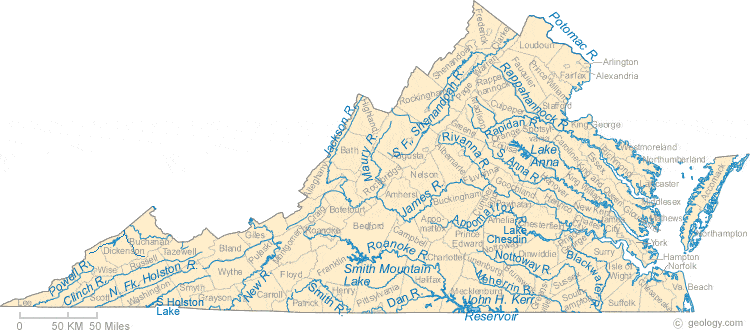Virginia's Habitat Value
The wood ape is traditionally associated with the Pacific Northwest, a region known for its vast forests, massive rock formations, and abundant wild food resources. It is often suggested that to support the presence of a large bipedal primate, an area must have sufficient resources to maintain a robust population of American black bear (Ursus americanus). So, how does Virginia stack up?
Forest Cover
According to the Virginia Department of Forestry (VDOF), 62% of the Commonwealth - well over 16 million acres - is forest land. Of this, 11% is protected national forest, 60% is privately owned, and less than 2% is managed by timber companies. VDOF manages 74,286 acres across 26 state forests and protects an additional 87,565 acres of privately owned forest through 196 conservation easements.*
Water
Five major rivers wind through the Commonwealth, supplemented by an additional 81 smaller rivers, streams, and creeks. There are also 51 large lakes and reservoirs, and countless woodland ponds, sloughs, marshes and springs. The eastern portion of the state is split by Chesapeake Bay, the third largest estuary on the planet. It is also home to the Great Dismal Swamp, a 113,000 acre wetland that provides some of the most important habitat on the Atlantic Seaboard.
Shelter
Caves, caverns, and rock outcroppings play a significant part in folklore surrounding the "wild man." These features also figure prominently in Virginia's natural and geologic history, with eight mountain ranges traversing the western half of the state and and more than 4,400 caves documented to date.
Forage & Game
Virginia is home to more than a dozen managed game species and numerous non-game prey animals. A robust whitetail deer population is supplemented with elk, turkey, waterfowl, grouse, quail, rabbit, raccoon, opossum, fox, coyote, fish and shellfish, reptiles and amphibians, leafy greens, woody browse, nuts, seeds, berries, tree fruits, roots, tubers, and aquatic vegetation.
* Statistics current as of July 2022

